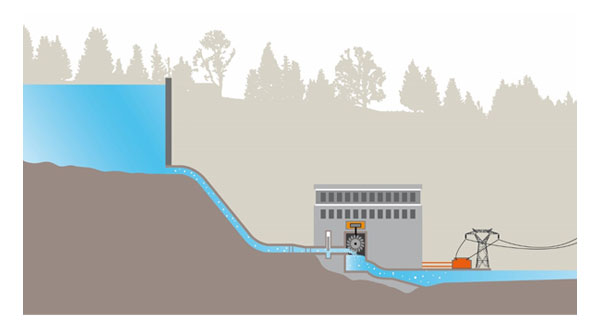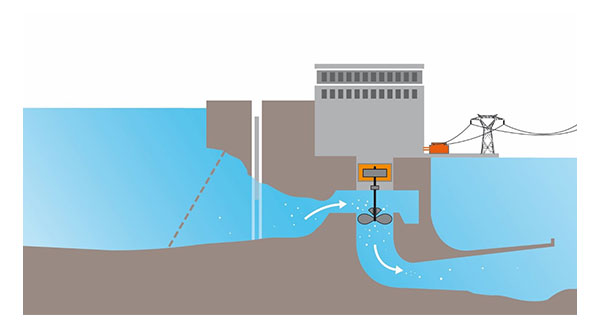1. Hydroelectricity is not new
The first dams and hydro power plants first appeared in France in the 19th century. The fact that they have been around for so long means that the sector is technologically mature. Little is said about it precisely because it is not a novelty. When the French countryside was still being lit with oil lamps, the village of Long (Somme department) took a gamble by harnessing the energy of its river (the Somme) to supply electricity to its inhabitants. In 1901, the municipality started building a power plant, which was inaugurated on June 7, 1903. As a result, Long homes were supplied with electricity, an amazing revolution for people. The village was dubbed “the city of lights,” and its fame spread all the way to Paris! More than a century later, it would conquer the world!
2. Hydroelectricity gets the lion’s share in renewables
Although it is less discussed than solar or wind power, hydroelectricity is the first source of renewable electricity (40%) in the world providing electricity to one out of five homes in France. If fossil fuel energies are included in the calculation, it climbs to the 3rd place, producing 16% of electricity in the world, behind gas (21%) and coal (41%). In fact, the expression “blue gold” is even used to describe an energy that currently produces nearly as much energy as all the other renewables put together. The International Energy Agency (IEA) speaks of the “forgotten giant of clean electricity,” which is nonetheless the “backbone of low-carbon electric production in the world.” No less.
3. It is an energy that works in the mountains, but that’s not all!
Although historically, hydroelectricity depended largely on topology—since mountainous regions are adapted to building control dams in which to store water and supported by high falls for on-demand production—mountains are not the only solution.
Consequently, run-of-the-river or low head plants can use a river’s continuous flow without retaining any water for continuous electric production.
 High head hydroelectric plant |  Run-of-the-river hydroelectric plant |
>> More information on hydroelectricity and its technologies <<
4. Hydroelectricity lights up a whole country
It’s true, 99% of Norway’s electricity comes from hydroelectricity!
China has the largest hydropower capacity: for example, the Three Gorges Dam powers between 70 and 80 million Chinese homes with 22,500 MW of installed power. Coming behind China in terms of its hydropower capacity, Brazil produces one of the cleanest energy mixes in the world, with almost 83% from renewable energies, two thirds of which is generated by hydropower.
One last figure? The industry employs more than 2.1 million people in the world (3rd employer of renewables behind photovoltaic plants and liquid biofuels).
